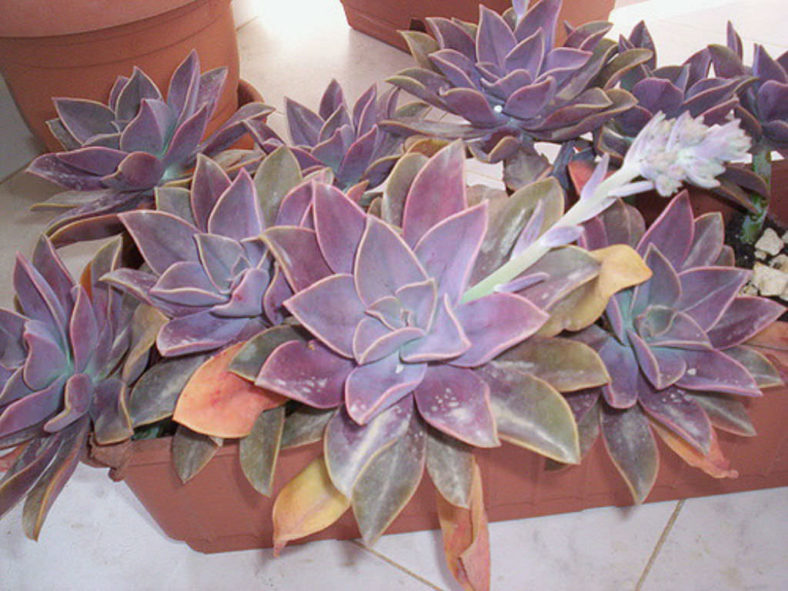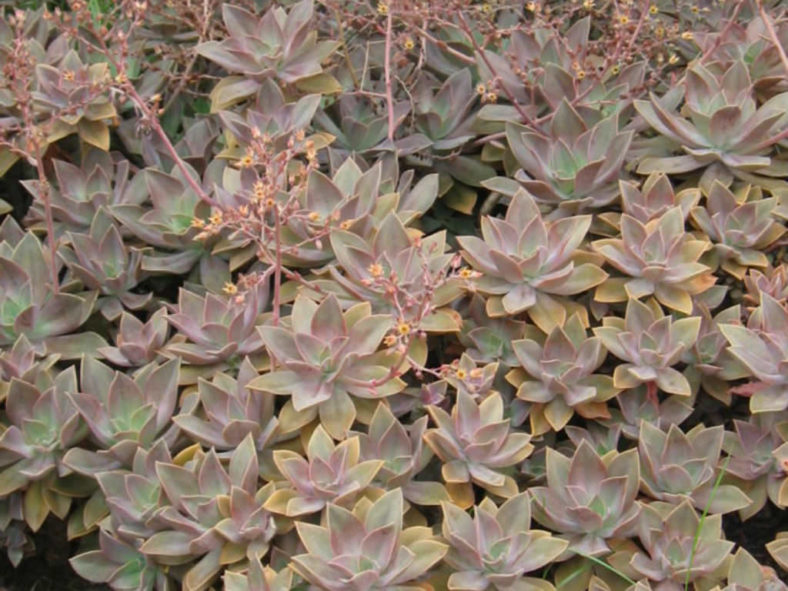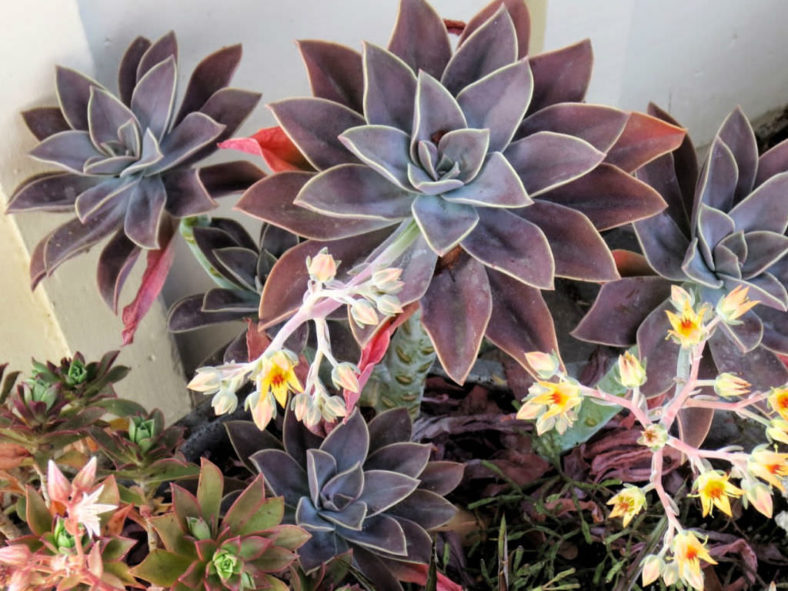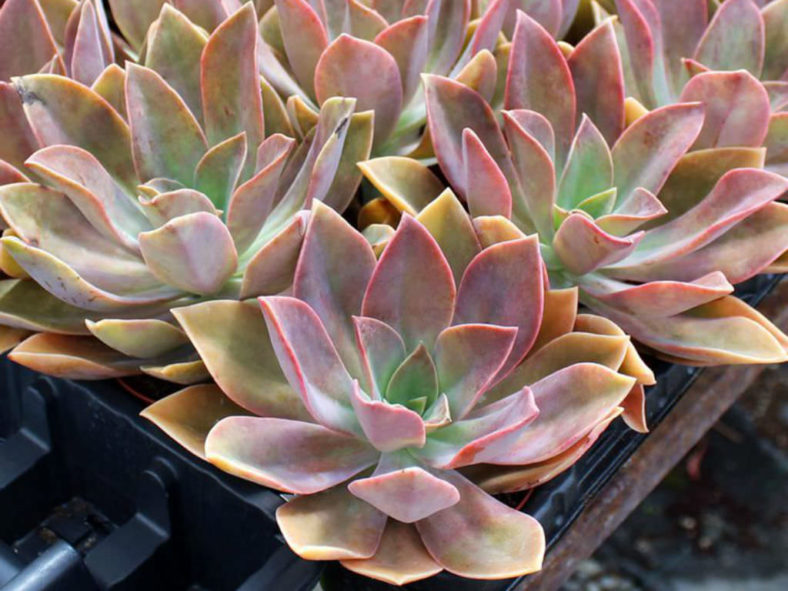Scientific Name
×Graptoveria 'Fred Ives'
Synonym(s)
Echeveria 'Fred Ives'
Scientific Classification
Family: Crassulaceae
Subfamily: Sempervivoideae
Tribe: Sedeae
Nothogenus: ×Graptoveria
Origin
×Graptoveria 'Fred Ives' is a hybrid created by Albert Baynes, a founding member of the National Cactus & Succulent Society (NCSS) in England, in 1946. It results from a cross between Graptopetalum paraguayense and a plant in the Echeveria gibbiflora complex. This hybrid was named by van Keppel in 1979 in honor of Fred Ives of Shipley, Yorkshire, one of the co-founders of the NCSS.
Description
×Graptoveria 'Fred Ives' is a beautiful succulent that forms clumps of large rosettes of fleshy, smooth, and waxy leaves at the end of short stems with pronounced leaf scars. The stems can grow up to 12 inches (30 cm) long and 1.2 inches (3 cm) in diameter, while the rosettes can reach a diameter of 16 inches (40 cm). The leaves are obovate-oblanceolate, faintly keeled on the lower surface, measuring up to 6 inches (15 cm) in length and 2.4 inches (6 cm) in width. They are green, flushed strongly with a bluish hue, becoming orangish, pinkish, or purplish, depending on the time of year and growing conditions.
The flowers are pale yellow, sometimes with red spots, and appear in summer in clusters on arching stalks that can grow up to 2 feet (60 cm) long.

Forms of ×Graptoveria 'Fred Ives'
How to Grow and Care for ×Graptoveria 'Fred Ives'
Hardiness: USDA hardiness zones 9a to 11b: from 20°F (-6.7°C) to 50°F (10°C).
The rules for Graptopetalum care are similar to those for most succulents. Container-bound plants thrive in a mixture of peat, sand or other grit, topsoil, and a small amount of compost. Full sun is the best situation, but they will also grow in partial sun with slightly rangy results.
Graptopetalums need excellent drainage and moderate water. You can tell when to water by sticking your finger in the soil. Water if the soil is dry several inches down, or the fleshy leaves look shriveled. Overwatering can cause root rot, making the plant susceptible to various pest infestations.
These succulents are generally easily propagated by seeds, leaf cuttings, or offsets. Any rosette that breaks off can root and start a new plant. Even a leaf that drops off quickly roots below the parent plant and produces a new rosette. The new plant feeds off the leaf until it shrivels and falls off. The new little ghost plant had rooted and sprouted new leaves by then.
Learn more at How to Grow and Care for Graptopetalum.
Links
- Back to nothogenus ×Graptoveria
- Succupedia: Browse succulents by Scientific Name, Common Name, Genus, Family, USDA Hardiness Zone, Origin, or cacti by Genus
Photo Gallery
Click on a photo to see a larger version.


